A Complete Guide to Hemkund Valley of Flowers – Trek, Bloom & Belief
Published on June 04, 2025
Hemkund Valley Of Flowers Tour Package is more than just a trek—it's a dream for anyone who has ever imagined standing in a high Himalayan meadow bursting with wildflowers or gazing at a glacial lake that feels sacred in its silence. This route isn’t just about covering distance through the mountains; it’s a deeply moving journey through petals, peaks, and pilgrim trails. Whether you're a nature lover chasing blooms, a spiritual soul seeking connection, or simply an explorer wanting to experience something unforgettable, this guide will walk you through the entire path—from the foothills of Rishikesh to Ghangaria, the breathtaking Valley of Flowers, and the holy shrine of Hemkund Sahib.
Let’s begin at the very start, where the road meets the river, and the Himalayas begin to whisper their ancient stories.
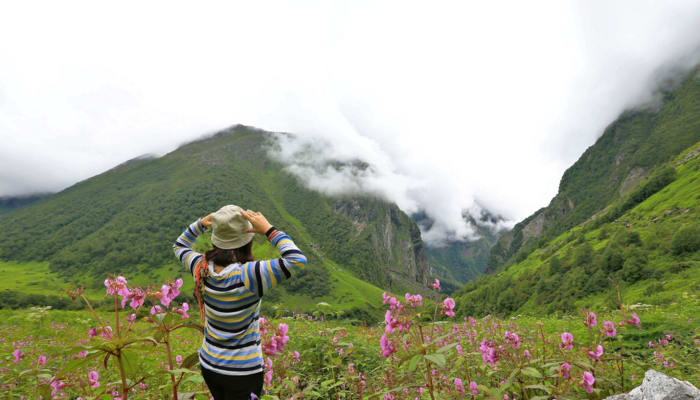
Hemkund Valley Of Flowers Tour Package – 6 Days from Rishikesh
Tour Highlights
-
Visit the iconic Valley of Flowers National Park, a UNESCO World Heritage Site
-
Trek to the sacred Hemkund Sahib Gurudwara by a glacial lake
-
Witness rare Himalayan flora including the Brahmakamal
-
Comfortable stays and expert guidance throughout
-
Ideal for nature lovers, trekkers, and spiritual travelers
Day-Wise Itinerary
Day 1: Depart From Rishikesh
Arrive in Rishikesh and report at 60’s Café (The Beatles Café). Begin your scenic drive to Joshimath / Pipalkoti, passing through lush valleys and mountain views. On arrival, check into your accommodation and rest for the night.
Day 2: Trek from Joshimath / Pipalkoti to Ghangaria
After breakfast, travel to Govindghat and start your 9 km trek to Ghangaria, a quiet Himalayan village surrounded by forests. Enjoy the cool air and peaceful surroundings. Check in to your campsite or lodge and relax.
Day 3: Trek from Ghangaria to Valley of Flowers
Start early for the beautiful trek to Valley of Flowers. Trek through rocky trails to reach the stunning alpine meadow filled with wildflowers. Spend time soaking in the scenery and return to Ghangaria by evening.
Day 4: Trek from Ghangaria to Hemkund Sahib
Begin a steep trek to Hemkund Sahib, located beside a glacial lake at 15,200 ft. Spot rare Brahmakamal flowers along the trail. Spend some peaceful time at the Gurudwara and trek back to Ghangaria for an overnight stay.
Day 5: Trek Downhill to Joshimath / Pipalkoti
Trek back to Govindghat and drive to Joshimath / Pipalkoti. Enjoy the scenic beauty from a new perspective. On arrival, check into your accommodation and rest.
Day 6: Return to Rishikesh
Depart for Rishikesh. Reach by evening with beautiful memories from the Valley of Flowers and Hemkund Sahib trek.
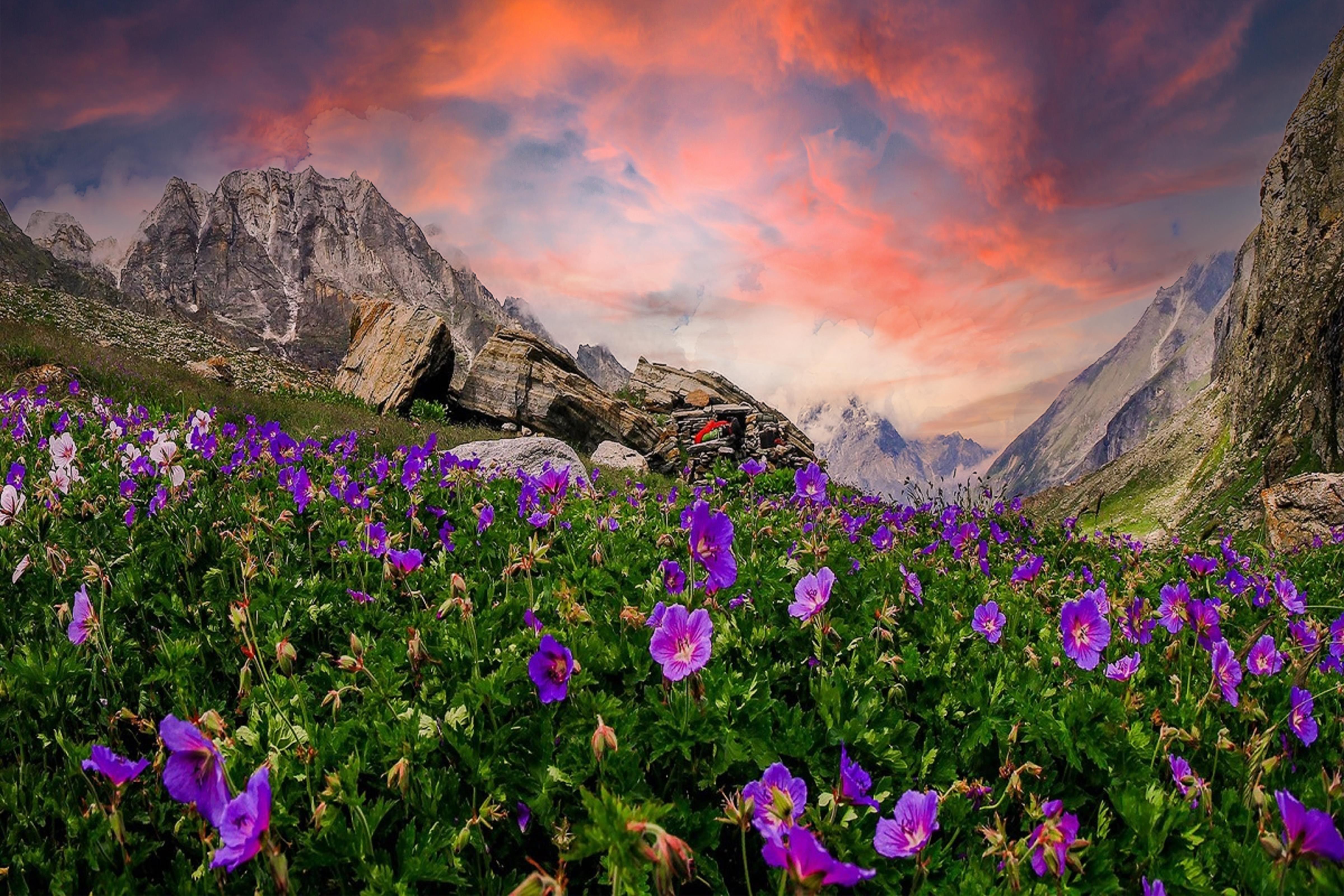
Starting the Journey – Rishikesh to Govindghat
Your expedition kicks off in Rishikesh, a spiritual town perched along the banks of the Ganga. From yoga retreats to cafes and riverbanks echoing with evening aartis, Rishikesh offers a gentle spiritual warm-up before you head deep into the Himalayas.
The road journey from Rishikesh to Govindghat covers about 275 km and takes 10–12 hours by car or bus. As you ascend into the Garhwal Himalayas, the Ganga becomes the Alaknanda River, flowing beside you like a silent travel partner. The drive passes through scenic and culturally significant towns like:
-
Devprayag – where the Bhagirathi and Alaknanda merge to form the Ganga
-
Srinagar and Rudraprayag – the gateway towns to the hills
-
Joshimath – the final large town before you enter the trekking zone
By nightfall, you reach Govindghat, a peaceful base town with budget hotels, dhabas, and shops where you can stock up on essentials.
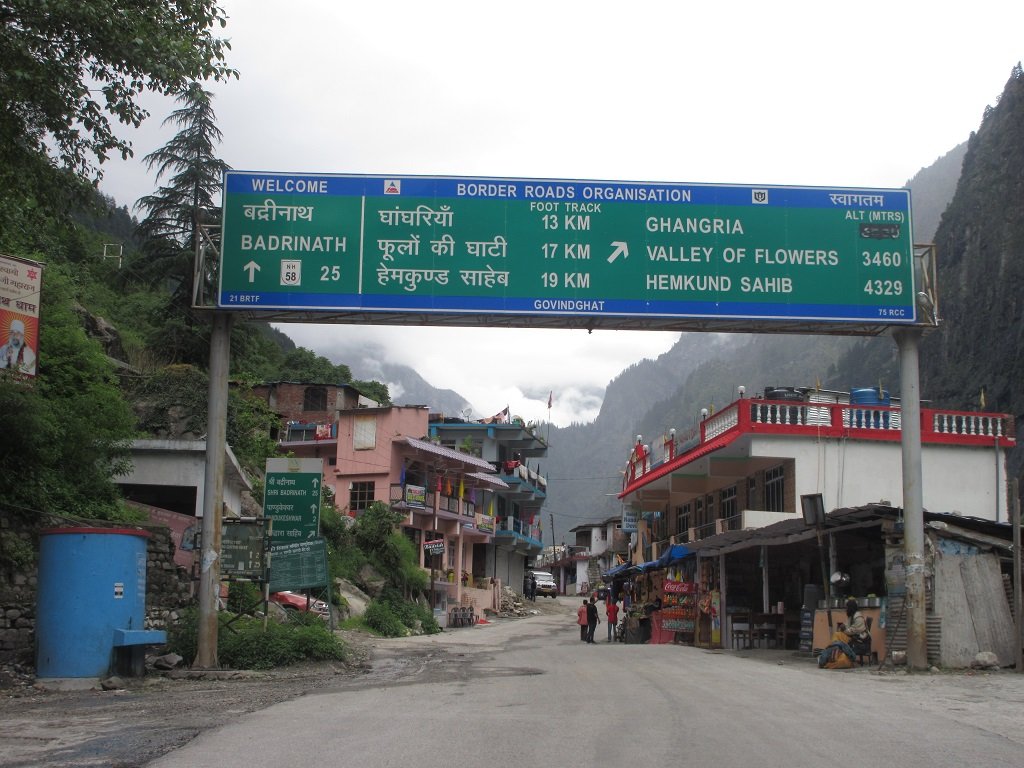
The Trek Begins – Govindghat to Ghangaria
Early next morning, a short 4 km drive takes you to Pulna village, the last point where vehicles can go. From Pulna, the real trek begins – a 13 km trail to Ghangaria, your first trekking milestone.
You’ll walk beside the Lakshman Ganga River, pass through forests, over bridges, and occasionally meet fellow pilgrims riding mules. There are small shops en route offering chai, Maggi, and energy snacks. The path is well-trodden but not easy – be ready for gradual inclines and rocky steps.
After 6 to 8 hours of trekking, you’ll reach Ghangaria (approx. 10,000 ft above sea level), a compact hamlet with lodges, guesthouses, Gurudwara accommodation, and basic facilities. Ghangaria serves as the base camp for both Valley of Flowers and Hemkund Sahib.
Exploring Valley of Flowers – A Walk into Botanical Heaven
The next day, you trek about 4 km (one way) into the Valley of Flowers National Park. The entrance gate is just a short walk from Ghangaria, where you register and pay a nominal entry fee.
As you move along the narrow trail, forest thins out, and suddenly, like a curtain being lifted, the valley opens up. Stretching over 8 km long and 2 km wide, it’s a mosaic of greens, purples, yellows, whites, and reds.
The air feels fragrant and fresh. Bees hover, butterflies dance, and birds chirp from the cliffs above. Snow-capped mountains guard the valley like ancient sentinels. Streams from melting glaciers cut across the meadows, and wooden bridges lead you deeper into floral paradise.

What flowers can you expect to see?
The Valley of Flowers boasts over 500 species of flowers and alpine plants. The exact varieties depend on the time of the season:
-
Mid-July to Mid-August is peak bloom season.
-
You may spot rare and exotic flowers such as:
-
Blue Poppy – rare, delicate, and vividly blue
-
Brahma Kamal – a sacred flower, found at high altitudes
-
Cobra Lily – striking and unusual in shape
-
Primulas, Daisies, Bellflowers, and Anemones
-
Photography is allowed, but picking flowers is strictly prohibited.
The Sacred Climb – Trek to Hemkund Sahib
On the following morning, prepare for a steeper challenge: the 6 km trek to Hemkund Sahib, located at an altitude of 4,329 meters (14,200 ft). This climb is steep and continuous, primarily composed of stone steps and sharp ascents.
As you climb, you’ll pass waterfalls, patches of snow, and stretches of stony terrain. Oxygen levels drop, so it’s important to ascend slowly, rest frequently, and stay hydrated. Even 15-year-olds can complete this trek with preparation and patience.
At the top, you reach the peaceful and surreal setting of Hemkund Sahib:
-
A white marble Gurudwara sits beside the Hemkund Lake, calm and mirror-like.
-
The lake is fed by glacial water and is surrounded by seven snow-covered peaks.
-
Pilgrims dip in the freezing water as a ritual of purification.
-
The Gurudwara offers warm Langar (prasad) and tea to all visitors.
Nearby stands the Lakshman Mandir, a temple said to be the meditation spot of Lord Lakshman.
Spending time at Hemkund Sahib is a deeply emotional and spiritual experience, regardless of your background.

Flora, Fauna, and Biodiversity
Besides flowers, the region is rich in rare and endangered wildlife. If you’re quiet and observant, you may spot:
-
Himalayan Monal – the state bird of Uttarakhand
-
Musk Deer – often hiding in alpine bushes
-
Asiatic Black Bear – shy but occasionally seen
-
Snow Leopard – extremely rare, but this is its natural habitat
-
Butterflies and pollinators – vibrant and diverse
Weather, Best Season, and Altitude Readiness
-
Best Season: Late June to early September
-
Ideal Flower Bloom: Mid-July to mid-August
-
Temperature: Daytime – 12°C to 20°C; Night – 2°C to 8°C
Be prepared for quick weather changes. It may rain unexpectedly, and fog can descend suddenly. Carry a rain poncho, warm clothing, extra socks, and always wear trekking shoes with good grip.
Tips for First-Time Trekkers
-
Pace Yourself: Don’t rush. Take breaks every 30–40 minutes.
-
Stay Hydrated: Carry a reusable bottle. Add glucose or ORS for energy.
-
Watch for Altitude Sickness: Mild headache or nausea? Rest. Severe? Descend.
-
No Littering: The valley is a UNESCO site. Bring back your trash.
-
No Wi-Fi or Networks: Most of Ghangaria has limited or no network. Enjoy the disconnection.
Cultural and Spiritual Significance
Both the Valley of Flowers and Hemkund Sahib are not just tourist destinations. They are deeply spiritual and ecologically sacred zones.
-
Valley of Flowers was first discovered by British mountaineer Frank Smythe in 1931.
-
Hemkund Sahib is one of the holiest Sikh shrines, associated with Guru Gobind Singh Ji.
Pilgrims, botanists, wildlife lovers, and trekkers from all over the world come here not only to explore, but to connect with something greater than themselves.
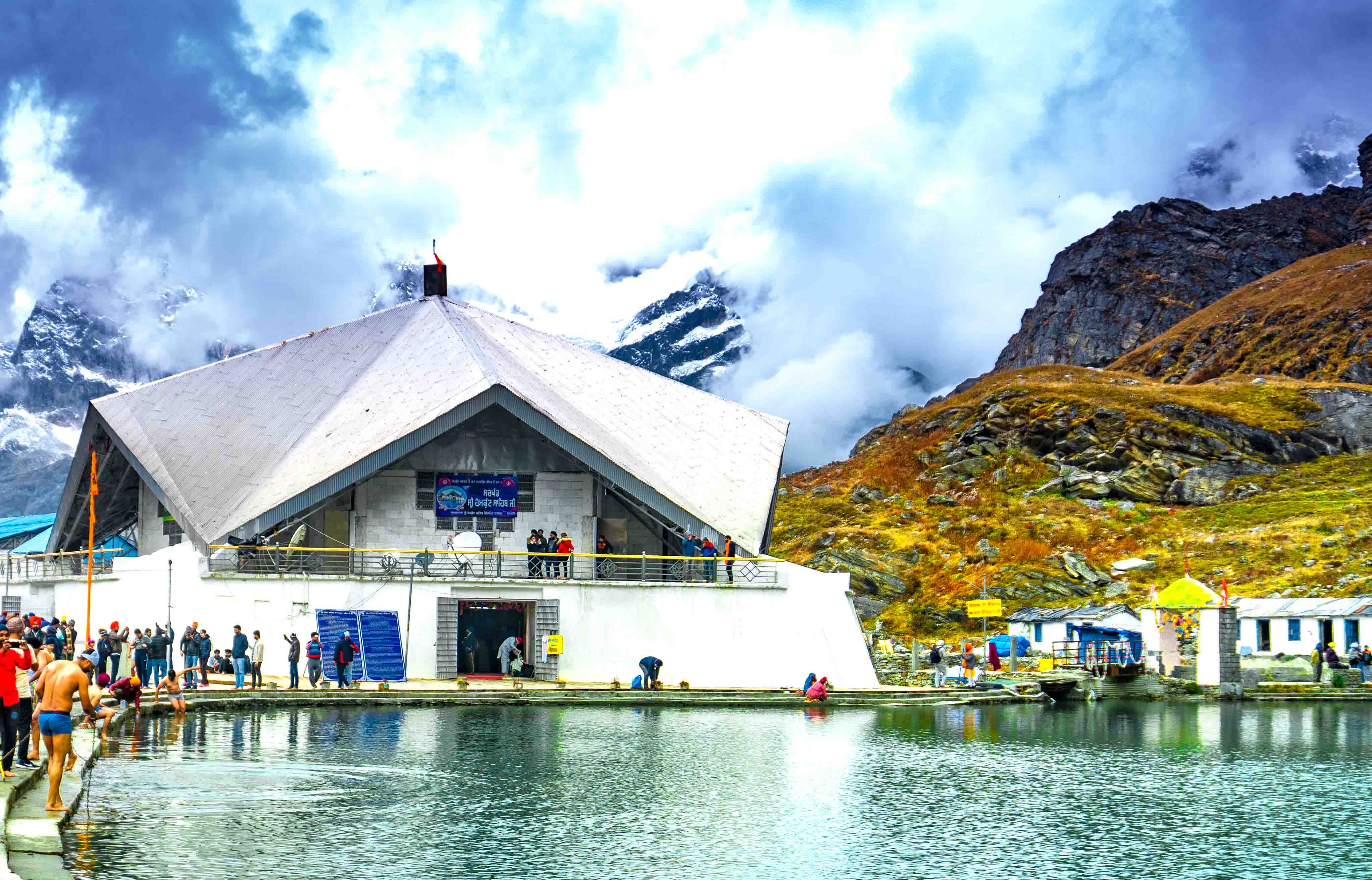
What to Pack (Essentials Only)
-
Warm layers (thermals, fleece, jacket)
-
Rain gear (poncho or jacket)
-
Reusable water bottle & ORS
-
Trekking shoes
-
Sunglasses, sunscreen, lip balm
-
ID card, permits, cash (no ATMs beyond Joshimath)
Final Thoughts
The Hemkund Valley of Flowers experience is like walking into a living painting—one where every flower has a story, every stream whispers peace, and every step connects you to a greater purpose. From the serene ghats of Rishikesh to the heavenly lake of Hemkund, every moment of the journey transforms you.
It’s more than a trek. It’s a memory you carry for life—in your breath, your soul, and your camera roll.
So whether you’re a student, solo traveler, family explorer, or spiritual seeker, the Valley is ready to welcome you with open arms and blooming meadows. If you’ve been waiting for the perfect Valley of Flowers travel plan, this is it. Let nature do the talking—you just take the first step.
_20250317T151620449Z.jpg)
Frequently asked questions
1. What is the best time to visit the Valley of Flowers and Hemkund Sahib?
The ideal travel window is mid-June to early September, with peak bloom typically occurring in July and August. Hemkund Sahib usually opens in June and closes by early October, depending on weather conditions.
2. What level of fitness is required for this trek?
The trek involves moderate to challenging gradients, particularly the Hemkund Sahib ascent. While no prior trekking experience is mandatory, a basic fitness level with the ability to walk 8–10 km on steep trails is essential.
3. Is this trek suitable for senior citizens or children?
This tour is not recommended for children under 10 or elderly travelers with health concerns due to high altitude and steep climbs. However, healthy individuals with prior mountain experience may participate with medical clearance.
4. How high is Hemkund Sahib and Valley of Flowers?
-
Hemkund Sahib is located at an altitude of approximately 15,200 ft (4,633 meters).
-
Valley of Flowers lies at around 11,500 ft (3,505 meters).
5. What kind of accommodation is provided?
The package includes basic but comfortable accommodations:
-
Hotels/lodges in Joshimath or Pipalkoti
-
Camps or guesthouses in Ghangaria (dorm/shared or twin-sharing options)
6. What are the weather conditions during the tour?
Weather is typically cool to cold even in summer. Expect temperatures ranging from 5°C to 20°C, with occasional rainfall, especially in July and August. Snow may still be present at Hemkund Sahib in early June.
7. Are there any permits required for the trek?
Yes. Entry permits are required for Valley of Flowers National Park and are included in the package unless specified otherwise. Personal ID is mandatory for verification.
8. Is mobile network coverage available?
Mobile connectivity is limited. Networks like BSNL and Jio may offer partial coverage in Joshimath and Govindghat. No signal is typically available beyond Ghangaria.
9. What meals are included in the package?
The package provides 5 breakfasts and 5 dinners, strictly vegetarian, keeping in mind altitude acclimatization and spiritual norms near Hemkund Sahib.
10. What is the total trekking distance?
-
Govindghat to Ghangaria: ~9 km
-
Ghangaria to Valley of Flowers (round trip): ~12–14 km
-
Ghangaria to Hemkund Sahib (round trip): ~12 km
Total trekking distance: Approximately 33–35 km over three days.
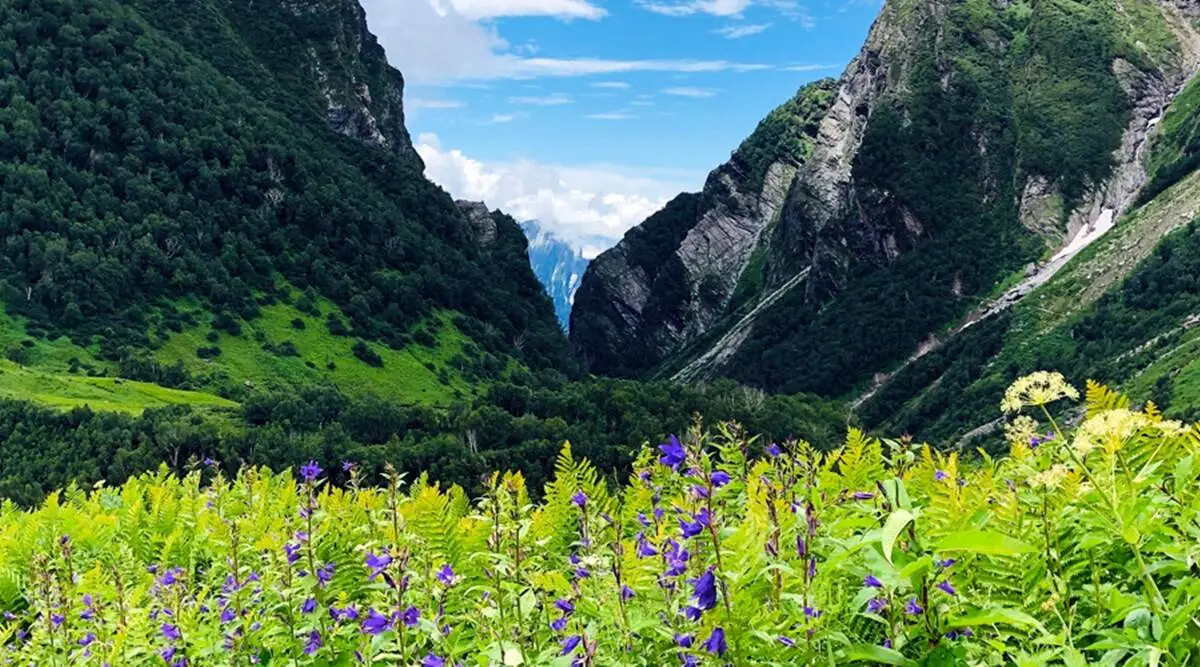


.jpg)
